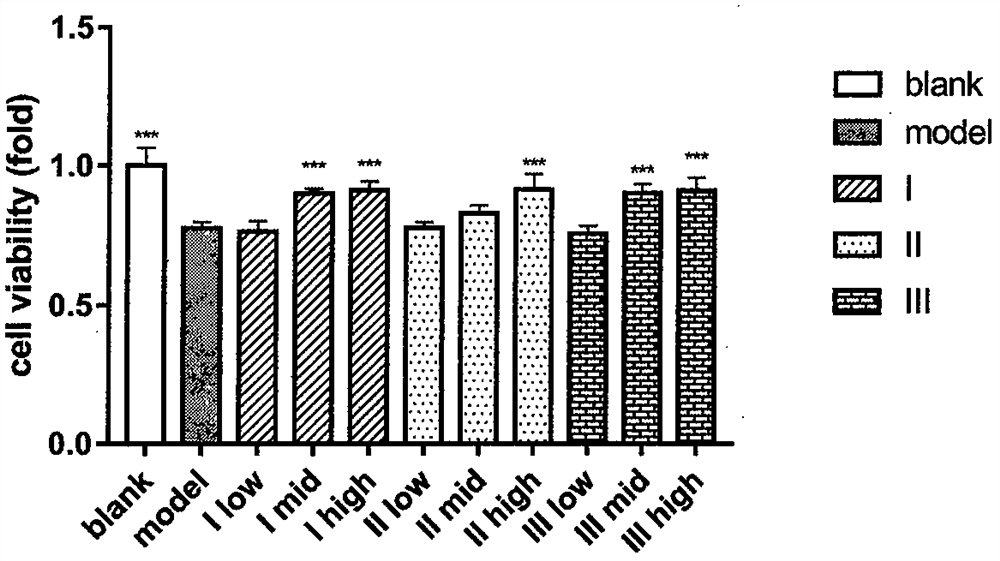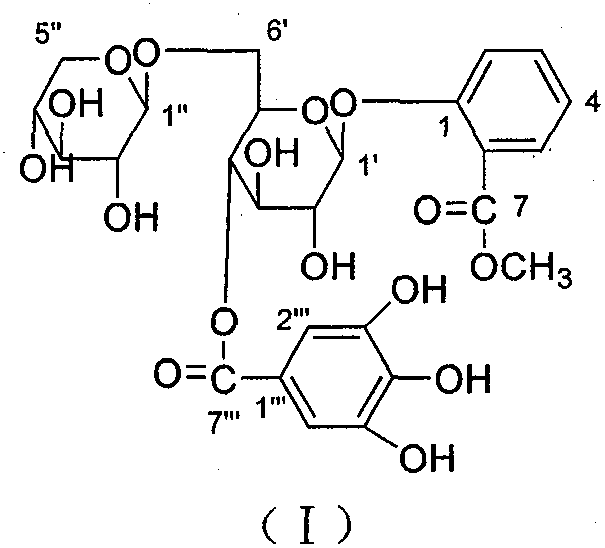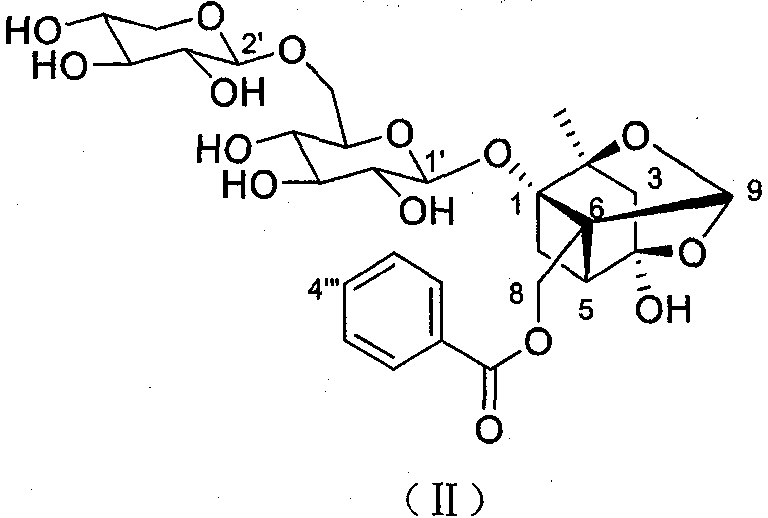Three New Compounds in Xinjiang Paeoniae Alba and Their Health and Medicinal Applications
A compound, peony technology, applied in the field of neuroprotection and neurodegenerative disease drugs, can solve the urgent problems of development and pharmacological activity research, and achieve the effect of enriching chemical components, easy extraction and separation, and good reference value
- Summary
- Abstract
- Description
- Claims
- Application Information
AI Technical Summary
Problems solved by technology
Method used
Image
Examples
Embodiment 1
[0049] Example 1 Extraction and separation of compounds
[0050] Get 10Kg of dried Radix Paeoniae Alba root, pulverize it and use 8 times the weight concentration of 80% ethanol to heat and reflux to extract 3 times, each time for 4 hours, after decompression and concentration to no alcohol smell, 2.5Kg of total extract is obtained, and the obtained The total extract is dispersed by adding water at a volume ratio of 1:9; the water dispersion is sequentially extracted 4 times with equal volumes of sherwood oil, ethyl acetate water-saturated n-butanol, and 450g of n-butanol part extract and Extraction of other parts; completely dissolve the extract of n-butanol part with 600ml of water, then use D101 macroporous resin as a carrier, load the sample by wet method, and elute with a water-ethanol solvent gradient of 0:100→100:0 to obtain Several eluted parts were detected by thin-layer chromatography, and the color was developed, and the eluted parts of each color were concentrated ...
Embodiment 2
[0051] Example 2 Extraction and separation of compounds
[0052]Get 10Kg of dried Radix Paeoniae Alba root, pulverize it and use 10 times the weight concentration of 80% ethanol to heat and reflux to extract 2 times, each time for 4 hours, and concentrate under reduced pressure until there is no alcohol smell to get 3.0Kg of total extract. The total extract is dispersed by adding water at a volume ratio of 1:12; the water dispersion is sequentially extracted 3 times with equal volumes of petroleum ether, ethyl acetate water-saturated n-butanol, and 500g of n-butanol part extract and Extraction of other parts: Dissolve the extract of n-butanol part completely with 650ml of water, then use D101 macroporous resin as a carrier, apply the sample by wet method, and elute with a water-ethanol solvent gradient of 0:100→100:0 to obtain Several eluted parts were detected by thin-layer chromatography, and the color was developed, and the eluted parts of each color were concentrated to dr...
Embodiment 3
[0053] Example 3 Extraction and separation of compounds
[0054] Take 10Kg of dry Xinjiang peony tuber root, pulverize it and use 10 times the weight concentration of 80% ethanol to heat and reflux extract 4 times, each time for 4 hours, after decompression and concentration to no alcohol smell, 2.8Kg of total extract is obtained, and the obtained The total extract is dispersed by adding water at a volume ratio of 1:6; the water dispersion is sequentially extracted with equal volumes of petroleum ether, ethyl acetate water-saturated n-butanol for 5 times, and the solvent is recovered to obtain 470g of n-butanol part extract and Other parts of the extract; the n-butanol part of the extract was completely dissolved in 630ml of water, then D101 macroporous resin was used as a carrier, and the sample was loaded by a wet method, and eluted with a water-ethanol solvent gradient of 0:100→100:0 to obtain Several eluted parts were detected by thin-layer chromatography, and the color wa...
PUM
 Login to View More
Login to View More Abstract
Description
Claims
Application Information
 Login to View More
Login to View More - R&D
- Intellectual Property
- Life Sciences
- Materials
- Tech Scout
- Unparalleled Data Quality
- Higher Quality Content
- 60% Fewer Hallucinations
Browse by: Latest US Patents, China's latest patents, Technical Efficacy Thesaurus, Application Domain, Technology Topic, Popular Technical Reports.
© 2025 PatSnap. All rights reserved.Legal|Privacy policy|Modern Slavery Act Transparency Statement|Sitemap|About US| Contact US: help@patsnap.com



